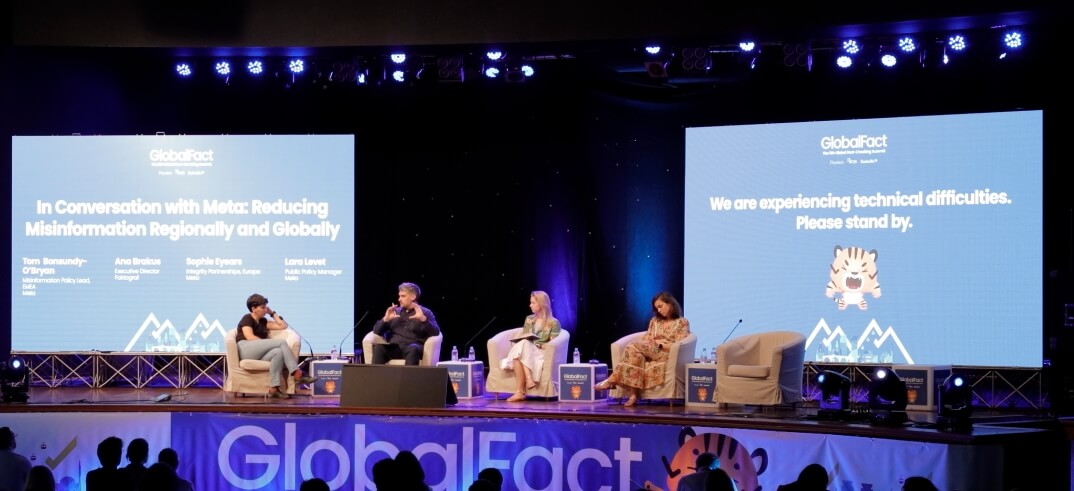There will come a day, if it hasn’t come for you already, when you’re no longer the youngest person in your newsroom. It’s a strange day. And in the last few years, it has gotten a bit stranger.
For many journalists, the veterans in the newsroom once offered a look at the future. They had the best sources, the biggest stories and the institutional knowledge about a community that you can only get by earning it. Those things may still be true in some places. But the young people in our newsrooms have a lot to teach us about the future, too. This occurred to me this morning after reading Melody Kramer’s piece on young people in public media:
Public media must not only think about retaining or attracting a younger audience, but about retaining and attracting younger employees, who are increasingly seeing more opportunities for creative growth elsewhere. (And don’t want to leave the mission-oriented world of public media.) I’ve talked to a number of people across public media over the past several months who have told me that they’re just waiting “for someone to retire” to be able to implement a new idea, or grow within their organization. Or they get tired and jump to a media company where their ability to try things isn’t hampered by their age.
I work with a few young journalists, and this summer, our Google Fellow Gurman Bhatia was the youngest at 22. In the very short time she was with Poynter, I learned a lot from her.
Here are 5 reasons you should pay attention to the young folks in the newsroom:
1. They come bearing gifts. Newly graduated from Columbia Journalism School, Gurman brought a lot of tools with her when she arrived. And the biggest gift — she was willing to slow down and show us how to use them. (She also reminded us all, frequently, that GIFs aren’t just for fun). Young people are most likely coming into newsrooms from j-school, so they’re fluent in the latest tools and technologies. And they’ve also grown up with them in a way that many Gen Xers and Boomers haven’t.
2. They’re not afraid to speak up. Poynter’s Digital Innovation faculty member Katie Hawkins-Gaar and News University Producer Ren LaForme have asked and continue asking us all why we’re doing what we’re doing. When the answer is “because that’s the way we’ve always done it,” their reply is usually, “that’s not a good enough reason.” Many young people don’t yet get or perhaps don’t care about the politics in our work spaces. This seems like a good thing, especially for legacy organizations.
3. They’re not afraid of change. Actually, they’re probably afraid of standing still for too long. After writing about journalists who’d lost their jobs to mass layoffs, I was surprised to hear how many journalists from Digital First Media’s Project Thunderdome had moved on to solid jobs so quickly. Here’s what I wrote in April with the year anniversary of Thunderdome’s last day:
The nature of the work they did — adapting quickly, testing, learning, failing and starting again, meant a lot of them were both attractive to other news organizations and that they knew how to pivot and keep moving. And for many of them, the shaky state of the journalism industry is their normal. They’ve been laid off before.
This is a generation that’s used to adapting, and that’s an essential skill for journalists in 2015.
4. Diversity. When we talk about diversity, we’re usually talking about ethnicity and gender. But working with people in different age groups can make you a better journalist, too. My colleague Ben Mullin is an important filter for me when I’m writing something and unsure if I’m getting it right or sound more like a 37-year-old who is trying way too hard. (He’s also a fountain of Taylor Swift trivia.) If the place you work is anything like the place I work, you have coworkers who are becoming grandparents, coworkers getting kids ready for college and caring for aging parents, coworkers in the dregs of raising young children and coworkers planning weddings or enjoying being young and single. If you write about human beings at all, you’ll probably gain something from knowing people in demographics outside of your own.
5. They still have a lot to learn. Gurman was a whiz with data. She wanted to learn more about writing profiles and best practices for aggregation. So we worked on those together. When you’re no longer the youngest in the newsroom, it can be easy to feel like you’re not relevant. But this is still true: The veterans in the newsroom often have the best sources, the biggest stories and the institutional knowledge about a community. And they’ve earned it. Whatever your generation, you know something that the youngest person in the newsroom does not.
The good news? Like most of us, they want to keep learning.







